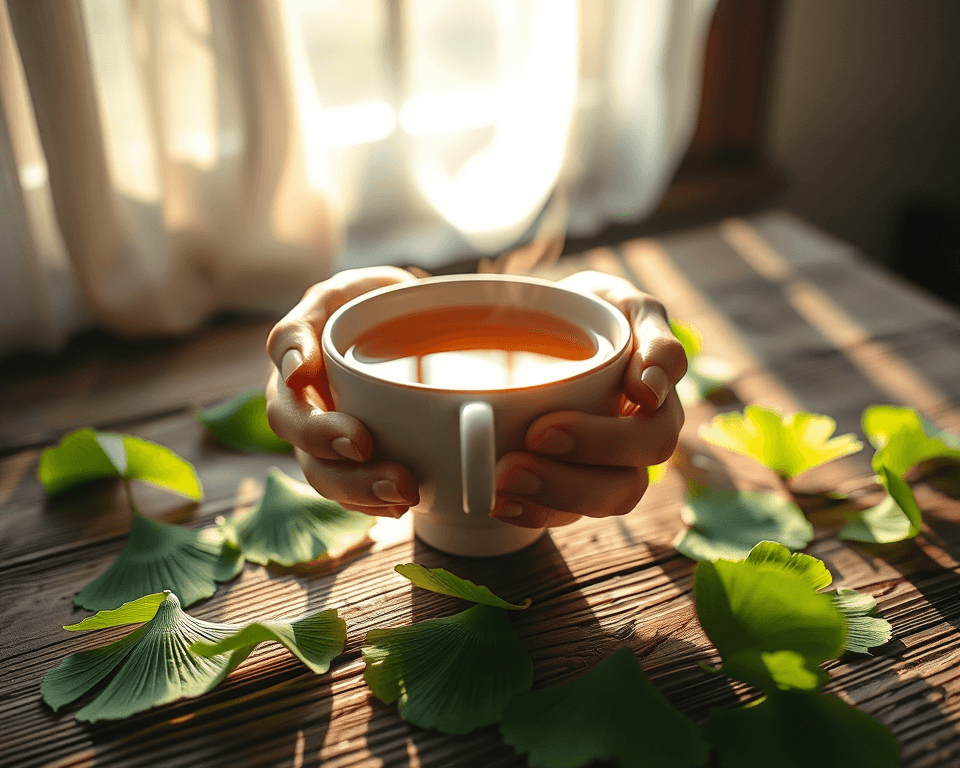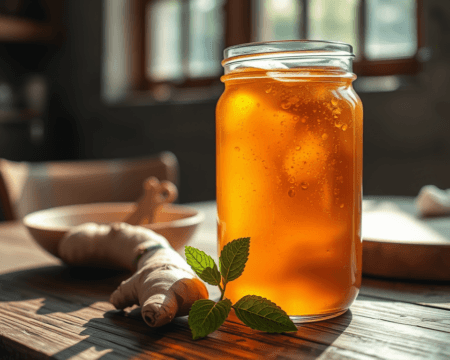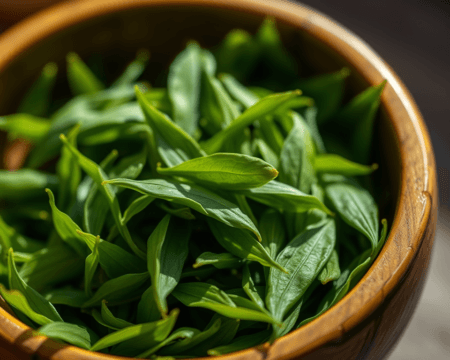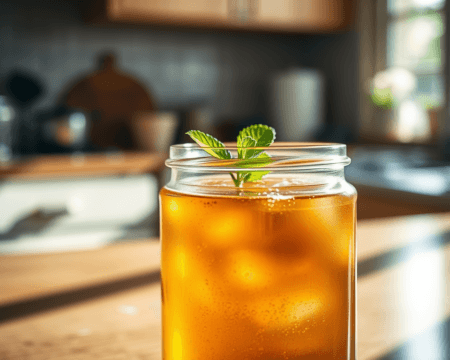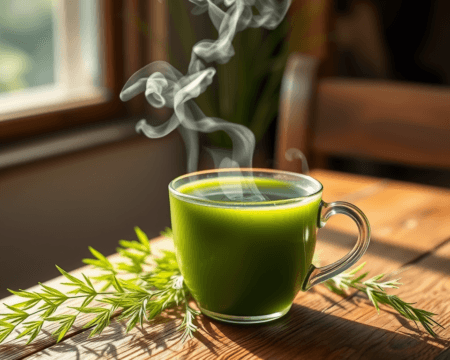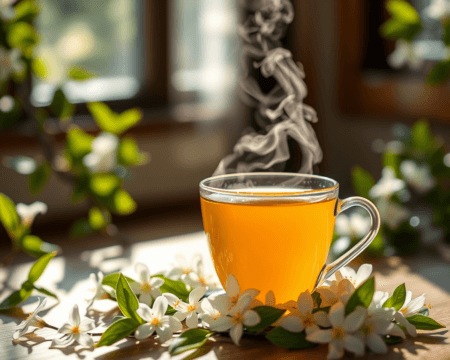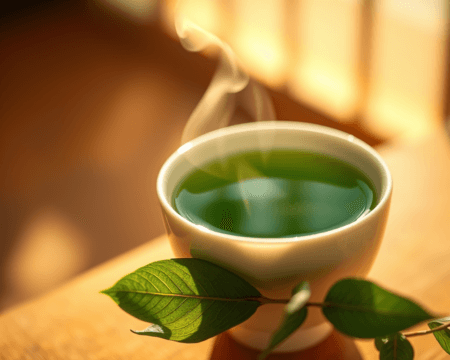Ginkgo tea is not just a drink; it’s a ritual, a connection to ancient remedies that have been utilized for centuries. The ginkgo biloba tree, with its beautiful fan-shaped leaves, offers a plethora of health benefits and a unique flavor that can transform your tea experience. Imagine sipping on a warm cup of ginkgo tea, knowing you’re treating your body to something special. This guide will walk you through everything you need to know—from the benefits of ginkgo leaves to the best ways to brew your perfect cup.
Key Takeaways
- Ginkgo tea is packed with health benefits like cognitive support and improved circulation.
- Fresh vs. dried leaves can impact flavor and potency—choose wisely.
- Pair ginkgo tea with complementary ingredients for an enhanced taste experience.
- Sustainable harvesting is essential to protect this ancient tree and its ecosystem.
Understanding Ginkgo Leaves
Overview of Ginkgo Biloba
So, what’s the deal with ginkgo leaves? Ginkgo biloba is not just any ordinary tree; it’s a living fossil that dates back over 200 million years! Seriously, this bad boy has seen it all. Known for its stunning fan-shaped leaves, ginkgo trees are celebrated in herbal medicine for their unique botanical properties and potential health benefits. People in traditional remedies talk up ginkgo’s ability to aid memory and circulation, making it a staple in alternative medicine.
With the ginkgo tree growing in various regions around the world, including the US, its leaves are often harvested for consumption in teas and supplements. Folk historians weren’t just tossing out fun facts; they knew the value of these leaves long before the research caught up. Whether it’s for cognitive support or just a cozy evening moment, ginkgo leaves are your go-to.
Common Uses of Ginkgo Leaves
I can’t talk about ginkgo without mentioning their impressive lineup of common uses. If you’re keen on herbal preparations or ginkgo supplements, you’re in good company. People love ginkgo leaves for their purported health remedies; they range from everything to boosting your memory to enhancing overall well-being.
Ever thought about how ginkgo leaf tea fits into this picture? It’s a mainstay in the world of herbal healing and wellness. Many herbal enthusiasts swear by the restorative qualities of ginkgo, and it’s exploded in popularity as part of a daily health regimen. Learning about the ethnobotany surrounding ginkgo can give you insight into just how powerful these leaves can be when incorporated into your lifestyle.
Benefits and Flavor Profile of Ginkgo Tea
Health Benefits of Ginkgo Leaves
Alright, let’s get into the juicy stuff—the health benefits. Ginkgo leaves are often championed for their cognitive support and circulation improvement. Research suggests that with consistent consumption, ginkgo tea can boost memory enhancement, making it a hot topic among students and older adults alike. It’s also been noted for its anti-inflammatory and antioxidant properties.
Imagine feeling sharper and more alert just by sipping on a flavorful cup of tea. Talk about a win-win situation. Whether you’re a caffeine lover or not, incorporating ginkgo leaf tea into your routine can be an energizing change that also works wonders for your health. Plus, combining the benefits of herbal medicine with a comforting drink just seems right.
Flavor Profile of Ginkgo Tea
Ah, the flavor—this is where things get fascinating! Ginkgo tea has a decidedly earthy flavor profile that can vary depending on how you prepare it. Fresh ginkgo leaves often give a lighter, grassy taste, while dried leaves tend to carry a more concentrated herbal profile. The aroma is equally delightful—think herbal freshness with a nutty undertone that makes you feel connected to nature.
Not only is this tea good for you, but the taste experience can be quite rewarding. If you’re after flavor, you can experiment by steeping with different herbs or spices. This isn’t your typical tea; it’s a chance to start a whole herbal journey with the ginkgo flavor as your base.
Step-by-Step Instructions to Make Ginkgo Tea
Gathering and Preparing Ginkgo Leaves
First things first: you need to gather your ginkgo leaves. If you’ve got access to a ginkgo tree, awesome! Freshly harvested leaves can yield the best flavor and health benefits. If not, dried leaves work just as well and are widely available online or at health food stores. When you’re selecting your leaves, look for healthy, bright green specimens that haven’t been exposed to pollutants.
Preparation is key. Whether you’re using fresh or dried leaves, you want to wash them thoroughly if they’re fresh. It’s just common sense; no one wants dirt in their tea! I always find a quick rinse under cool water does the trick. For dried leaves, there’s no prep needed—just grab ‘em and get ready to brew.
Brewing Ginkgo Tea
Now the real fun begins: brewing! Start by boiling water; 190°F is the sweet spot for a great infusion. If you’re using fresh leaves, about 5–10 leaves for a cup is ideal. For dried leaves, approximately 1–2 teaspoons per cup does the job marvelously. Once the water reaches that perfect temperature, toss in your leaves and let it steep for 5 to 10 minutes, depending on your taste preferences.
Letting it steep longer gives it a more robust flavor but can also make it slightly bitter. If you’re looking to enhance the taste, consider adding honey, lemon, or even ginger during the steeping process. This way, you elevate the entire experience, mixing in those complementary flavors that play oh-so-nice with ginkgo’s earthy notes.
Pairing Suggestions and Alternative Uses
Complementary Ingredients for Ginkgo Tea
You’re probably wondering what tastes good with ginkgo tea, right? The beauty of ginkgo leaves is that they mix well with a variety of ingredients. Citrus like lemon or orange adds a refreshing twist. Honey brings in natural sweetness, balancing the earthiness of the leaves perfectly.
You can also think about blending ginkgo with other herbs like peppermint or lemongrass for an invigorating kick. This tailored combo not only heightens the flavor but boosts your health benefits, too. It makes for an excellent afternoon pick-me-up or an evening wind-down.
Alternative Recipes with Ginkgo Leaves
Why stop at tea? Ginkgo leaves are edible and can be included in various culinary creations. Ever thought of tossing a few into a stir-fry for an earthy depth? You can also make ginkgo-infused honey! Just combine some fresh ginkgo leaves with honey and let it sit for a week—boom, you’ve got a sweet treat loaded with herbal goodness.
Feeling adventurous? Try adding ginkgo leaves to salads for that unique flavor. Culinary applications for ginkgo are limited only by your imagination, so embrace your inner chef and start experimenting!
Environmental Considerations and Sustainable Practices
Impact of Ginkgo Harvesting
As much as we love ginkgo, it’s crucial to discuss how harvesting impacts the environment. Overharvesting can lead to declining populations and affect local ecosystems. Ensuring sustainable practices when sourcing your ginkgo is a must.
If you’re harvesting your own leaves, do so responsibly—only take what you need, and never strip a tree bare. If you’re buying ginkgo products, look out for brands that prioritize sustainability. It’s about enjoying nature without compromising it.
Tips for Choosing Sustainable Ginkgo Products
When it comes to ginkgo products, knowledge is power. Opt for ethical sourcing—check if brands are transparent about where they get their leaves. Quality matters, too; consider organic ginkgo if you can find it. Many reputable brands like Nature’s Way and Gaia Herbs offer ginkgo products sourced sustainably and made with care.
Keep an eye out for consumer awareness campaigns promoting responsible consumption. It’s all about making choices that benefit both you and the planet. After all, every cup of ginkgo tea should feel good inside and out.
By embracing these practices, you’re not just enjoying a fantastic herbal tea; you’re supporting a healthier planet. So, sip responsibly and enjoy that connection to nature! Whether you’re in it for the health benefits, the flavor, or simply the ritual, ginkgo tea offers plenty to love. Go on—brew it, blend it, and let the goodness flow!
Frequently Asked Questions
What are the main health benefits of ginkgo tea?
Ginkgo tea is known for its cognitive support, potentially enhancing memory and concentration. Additionally, it can improve circulation, promote antioxidant activity, and support eye health by improving blood flow.
How does the flavor of fresh ginkgo leaves compare to dried ones?
Fresh ginkgo leaves generally have a more vibrant, slightly grassy flavor, while dried leaves provide a more concentrated taste. The choice between fresh and dried often depends on personal preference and intended use.
Can I combine ginkgo tea with other ingredients for added benefits?
Yes, ginkgo tea pairs well with ingredients like lemon, ginger, or honey. These additions can enhance flavor and provide additional health benefits, such as anti-inflammatory properties from ginger.
Is it safe for everyone to drink ginkgo tea?
While ginkgo tea is safe for many, it’s important for individuals on blood thinners or certain medications to consult a healthcare provider before consumption. Pregnant or nursing women should also seek medical advice.
How should I store ginkgo leaves to maintain their potency?
To preserve the potency of ginkgo leaves, store them in an airtight container in a cool, dark place. This helps prevent degradation from light and humidity, ensuring freshness for longer periods.
What is the best way to brew ginkgo tea?
For a flavorful ginkgo tea, use about one teaspoon of dried leaves per cup of boiling water. Steep for 5-10 minutes, then strain and enjoy. Adjust the steeping time for your preferred strength.
How often can I drink ginkgo tea?
Most people can safely enjoy ginkgo tea 1-3 times a day. However, it’s best to start with one cup and monitor how your body responds before increasing frequency.
Are there any side effects associated with ginkgo tea?
Common side effects may include headaches, dizziness, or gastrointestinal upset. If you experience any severe reactions, it’s advisable to stop drinking the tea and consult a healthcare professional.
Is ginkgo tea environmentally friendly?
Choosing sustainably harvested ginkgo leaves is important for conservation. Look for brands that prioritize ecological practices to protect ginkgo trees and their native habitats.




